 2005 Peugeot 107 (Phase I, 2005) 3-door Dimensions, Size & Specs
2005 Peugeot 107 (Phase I, 2005) 3-door Dimensions, Size & SpecsMeasurements of the 2005 Peugeot 107 3-door, engineered for optimal performance and comfort
| Dimensions | |
|---|---|
| Length: | 3430 mm135.0 in11.3 ft |
| Width: | 1630 mm64.2 in5.3 ft |
| Width (Opened Mirrors): | 1855 mm73.0 in6.1 ft |
| Height: | 1470 mm57.9 in4.8 ft |
| Trunk Capacity: | 130 liter4.6 cu ft |
| Trunk Capacity (Max): | 712 liter25.1 cu ft |
| Weight Specifications | |
| Curb Weight: | 800-885 kg1764-1951 lbs |
| Maximal permitted Weight: | 1180-1235 kg2601-2723 lbs |
| Roof Load: | 50 kg110 lbs |
| Tire Specifications | |
| Rims Size: | 14-inch rims:
|
| Tire Size: |
|
The Peugeot 107 Phase I, launched in 2005 and produced until 2008, is a compact 3-door hatchback designed primarily for efficient city driving and maneuverability. Measuring 3430 mm (135.0 inches) in length and 1630 mm (64.2 inches) in width—expanding to 1855 mm (73.0 inches) with mirrors opened—the 107 is remarkably compact, making parking and urban navigation straightforward. Its height stands at 1470 mm (57.9 inches), providing a balanced profile that enhances stability while maintaining its small footprint. The vehicle’s curb weight ranges between 800 and 885 kg (1764 to 1952 lbs), contributing to its agile performance and fuel efficiency. It supports a maximum weight of 1180 to 1235 kg (2601 to 2723 lbs) depending on variant and equipment. Despite its small size, the Peugeot 107 offers practical storage solutions with a luggage capacity of 130 liters (4.6 cubic feet), which significantly expands to 712 liters (25.1 cubic feet) when the rear seats are folded down. This flexibility makes it suitable for everyday errands and small cargo loads. The car is equipped with 4.5J x 14 sized rims fitted with tire dimensions of 155/65 R14, providing a balance of comfort, grip, and fuel economy. Additionally, the 107's roof loading capability is rated up to 50 kg (110 lbs), enabling extra storage options such as roof boxes or racks. Designed as an entry-level model targeting urban commuters, the Peugeot 107 combines minimal urban footprint with surprisingly versatile interior space, offering economical operation without sacrificing practicality. Its compact dimensions and lightweight build position it as an excellent choice for drivers seeking easy handling in crowded city environments.
Discover the standout features that make the 2005 Peugeot 107 3-door a leader in its class
Have a question? Please check our knowledgebase first.
The Peugeot 107 Phase I (2005) 3-door hatchback measures 3430 mm (135.0 inches) in length, 1630 mm (64.2 inches) in width, and 1470 mm (57.9 inches) in height. When the side mirrors are opened, the width extends to 1855 mm (73.0 inches). These compact dimensions make the Peugeot 107 a true city car, ideal for tight urban environments and easy maneuvering in crowded streets. Its relatively small footprint offers excellent ease of parking while still accommodating four passengers comfortably.
The curb weight of the Peugeot 107 Phase I ranges from 800 to 885 kg (1764 to 1952 lbs), depending on equipment and trim levels. The maximum permissible weight ranges from 1180 to 1235 kg (2601 to 2722 lbs). This lightweight construction helps improve fuel efficiency and agility, characteristics important for a city hatchback. The relatively low weight combined with a compact size ensures nimble handling and easy control, making it an excellent choice for everyday commuting.
Yes, the Peugeot 107 Phase I 3-door hatchback fits comfortably in a standard residential garage. Typical garage widths range from about 2400 mm (94.5 inches) to 3000 mm (118 inches) or more, while the 107’s width with mirrors opened is only 1855 mm (73.0 inches). Its overall length of 3430 mm (135.0 inches) is also well within the common garage length ranges. This makes it easy for owners to park and store their Peugeot 107 securely at home without spatial constraints.
The Peugeot 107 offers a luggage capacity of 130 liters (4.6 cubic feet) with the rear seats upright, providing space for small grocery trips or daily essentials. When the rear seats are folded down, the capacity expands significantly to 712 liters (25.1 cubic feet), allowing the transportation of larger items or more substantial loads. This flexibility makes the 107 practical despite its compact size, supporting a range of everyday activities from city errands to light weekend trips.
The roof load capacity for the Peugeot 107 Phase I is rated at 50 kg (110 lbs). This limit is important for safely carrying additional cargo such as roof boxes, sports equipment, or lightweight luggage while driving. Staying within this weight restriction ensures the vehicle's stability, balance, and overall safety, especially given the car’s compact size and suspension design.
The Peugeot 107 Phase I is equipped with 14-inch rims sized 4.5J x 14 and tires sized 155/65 R14. These relatively small wheels contribute to a smooth ride over uneven city roads and offer good maneuverability. The 155 mm tire width balances grip and fuel efficiency, while the 65 aspect ratio helps absorb road irregularities, enhancing comfort. Overall, this setup supports the car’s role as an easy-to-drive city hatchback with nimble steering.
The Peugeot 107 introduced in 2005 does not have a direct predecessor under the exact model name, as it was part of the joint venture with Citroën and Toyota in the city car segment replacing the Peugeot 106, which was a larger supermini. Compared to the 106, the 107 is more compact — the 106 was longer and wider, making the 107 more suitable for tight urban driving and parking. This shift to smaller dimensions reflects changing market demands for efficient, city-friendly vehicles.
The Peugeot 107 shares its platform and many features with its sister models, the Citroën C1 and Toyota Aygo, all launched around 2005. Dimensionally, all three are very similar, designed as compact city hatchbacks with lengths around 3.4 meters (around 135 inches) and similar widths and heights. The 107’s lightweight design, compact footprint, and practical interior space are on par with competitors like the Fiat Panda and Toyota Yaris of the time, making it a competitive choice for urban drivers seeking efficiency and ease of use.
The small dimensions of the Peugeot 107, including its 3430 mm (135.0 inches) length and narrow width, provide exceptional maneuverability in city traffic. It allows for easier parking in tight spots, agility through narrow streets, and easier navigation in congested areas. Additionally, the lightweight and compact design contribute to fuel efficiency and lower emissions, making it both economically and environmentally friendly for urban commuters.
The curb weight of the Peugeot 107 Phase I varies between 800 kg (1764 lbs) and 885 kg (1952 lbs), depending on equipment and trim. This relatively low weight benefits performance by enhancing fuel efficiency, acceleration responsiveness, and overall driving dynamics. It also reduces braking distances and makes the car easier to handle, especially at lower speeds, which is important for an urban-focused city car designed to be practical and economical.
Discover similar sized cars.
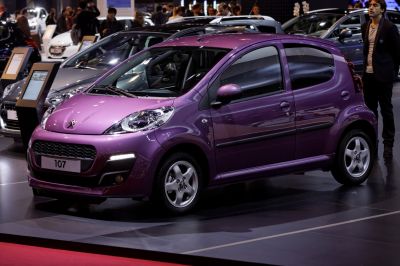
| Production: | 2012-2014 |
|---|---|
| Model Year: | 2012 |
| Length: | 3430 mm135.0 in |
| Width: | 1855 mm73.0 in |
| Height: | 1465 mm57.7 in |
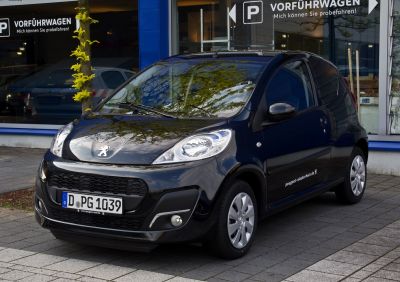
| Production: | 2012-2014 |
|---|---|
| Model Year: | 2012 |
| Length: | 3430 mm135.0 in |
| Width: | 1855 mm73.0 in |
| Height: | 1465 mm57.7 in |
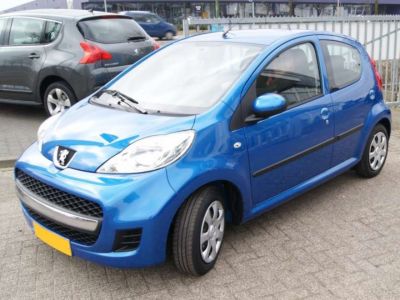
| Production: | 2008-2012 |
|---|---|
| Model Year: | 2009 |
| Length: | 3430 mm135.0 in |
| Width: | 1855 mm73.0 in |
| Height: | 1465 mm57.7 in |
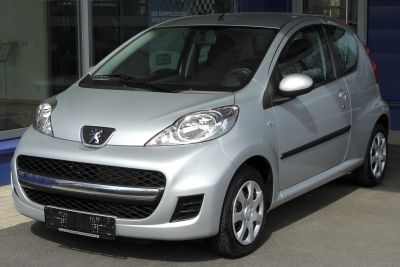
| Production: | 2008-2012 |
|---|---|
| Model Year: | 2009 |
| Length: | 3430 mm135.0 in |
| Width: | 1855 mm73.0 in |
| Height: | 1465 mm57.7 in |
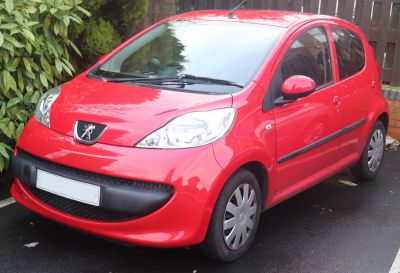
| Production: | 2005-2008 |
|---|---|
| Model Year: | 2005 |
| Length: | 3430 mm135.0 in |
| Width: | 1855 mm73.0 in |
| Height: | 1470 mm57.9 in |
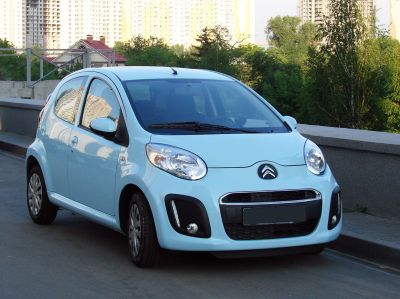
| Production: | 2012-2014 |
|---|---|
| Model Year: | 2012 |
| Length: | 3440 mm135.4 in |
| Width: | 1855 mm73.0 in |
| Height: | 1465 mm57.7 in |
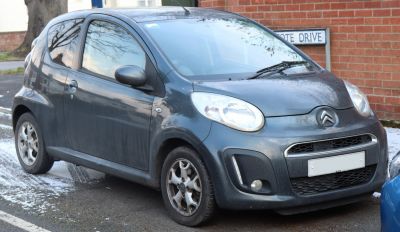
| Production: | 2012-2014 |
|---|---|
| Model Year: | 2012 |
| Length: | 3440 mm135.4 in |
| Width: | 1855 mm73.0 in |
| Height: | 1465 mm57.7 in |
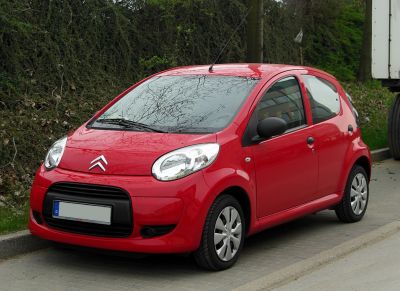
| Production: | 2008-2012 |
|---|---|
| Model Year: | 2008 |
| Length: | 3435 mm135.2 in |
| Width: | 1855 mm73.0 in |
| Height: | 1470 mm57.9 in |
